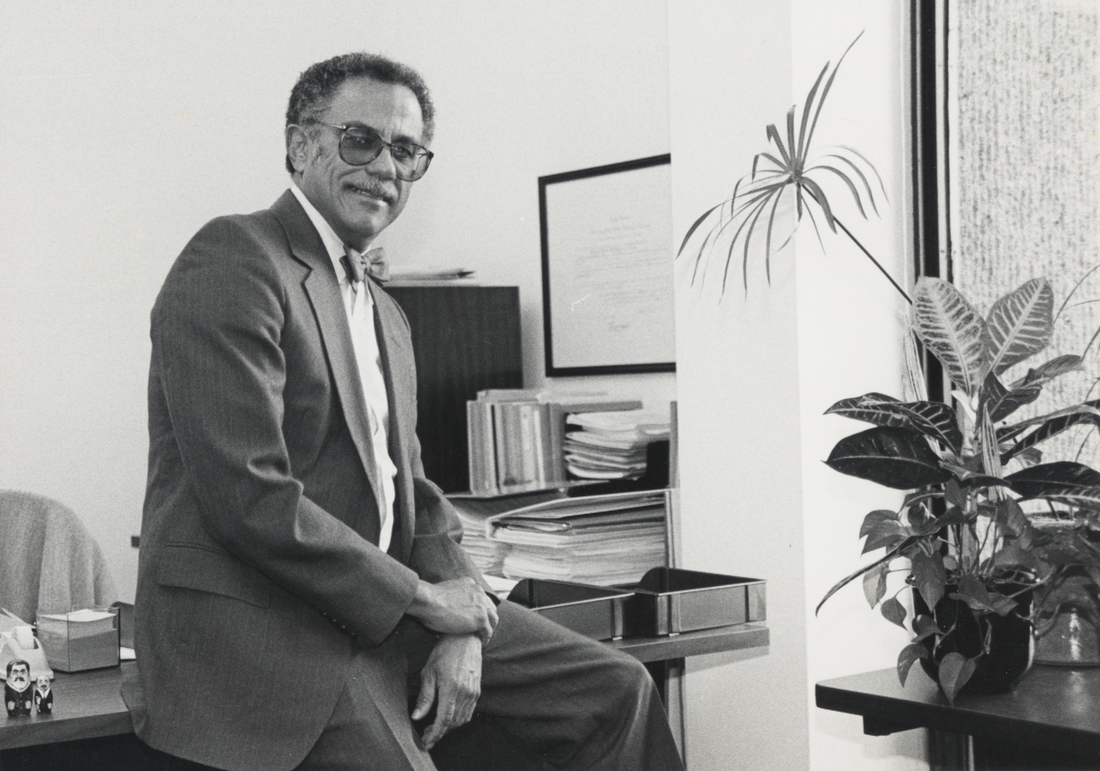|
“My suggestion to young people is that not only should they read about the history of science and engineering, but that they should read about the lives of those that have made contributions to these fields.” ― Warren M. Washington Dr. Warren Washington was born and raised in Portland, Oregon. His father sparked his interest in astronomy with a telescope that he set up on the sidewalk outside their home and Washington visited the library often to borrow books about famous scientists. He went on to earn a bachelor's degree in physics and a master's degree in meteorology from Oregon State University. He then attended Pennsylvania State University and completed his doctorate in meteorology there. Dr. Warren was the second African-American to earn a doctorate in atmospheric sciences, the first (and mentor to Washington) was Charles E. Anderson who forecasted weather for the Tuskegee Airmen.
In 1963 Dr. Washington joined the National Center for Atmospheric Research (NCAR) in Boulder, Colorado as a research scientist. Here is where some of his greatest and most influential research projects took place. In the 1960s he worked with senior scientist Akira Kasahara to create an atmospheric computer model that used the laws of physics to help predict how the climate will change over time. NCAR, with Dr. Washington as part of the team, created the Community Climate Model (CCM) in 1983. This was an open resource that could be used by the climate research community. In the 1990s the model was updated and expanded upon; this new research tool was called the Climate System Model (CSM) and included models of the atmosphere, landmasses, oceans, and sea ice. Due to these models being utilized by atmospheric organizations and groups researching climate change and its effects on the globe the model’s name was changed to the Community Climate System Model (CCSM). Besides his hugely influential work mapping out climate change, Dr. Washington has many other achievements in his field. Dr. Washington was part of the group of scientists that shared the Nobel Peace Prize in 2007 as a member of the Intergovernmental Panel on Climate Change. He was also awarded the National Medal of Science from President Obama in 2010 for “his development and use of global climate models to understand climate… and for his work to support a diverse science and engineering workforce.” Washington has written over 150 publications, including An Introduction to Three-Dimensional Climate Modeling, which he co-wrote with Claire Parkinson in 1986. This book is still used today as an essential reference tool in the field of atmospheric science. He also has served as a member of the President’s National Advisory Committee on Oceans and Atmosphere and worked under the Carter, Reagan, Clinton, and Bush administrations. Dr. Washington has encouraged young people and those underrepresented in the STEM fields to both become interested in the sciences and feel supported in their endeavors. He has mentored dozens of both graduate and undergraduate students and according to the UCAR’s staff profile of Dr. Washington: “In 1999, Washington won the Dr. Charles Anderson Award from the American Meteorological Society ‘for pioneering efforts as a mentor and passionate support of individuals, educational programs, and outreach initiatives designed to foster a diverse population of atmospheric scientists.’" This further demonstrates that having both a support system and a true passion for a branch of science are the first steps toward a bright future in the fields of STEM. Sources: https://www.cgd.ucar.edu/staff/wmw/ https://www.cesm.ucar.edu/about/?ref=hp https://nationalmedals.org/laureate/warren-washington/ https://www.nsf.gov/news/special_reports/medalofscience50/washington.jsp https://www.goodreads.com/author/quotes/777466.Warren_M_Washington |
Categories
All
Archives
June 2024
|
G.E.M. Environmental NFP
Geology - Engineering - Minerals - Environmental - Not for Profit
Geology - Engineering - Minerals - Environmental - Not for Profit
Community Partners
|
Programs
|
Get Involved
|
About
|
Follow Us
|
Sponsors & Donors
|
© COPYRIGHT 2017 - 2023. ALL RIGHTS RESERVED. G.E.M. Environmental NFP
GEM Environmental, GEM4STEM, GEM Corps, and Charity Rocks are all Registered Trademarks of G.E.M. Environmental NFP.
Any and all use of Trademarks or Copyrights must be authorized.
GEM Environmental, GEM4STEM, GEM Corps, and Charity Rocks are all Registered Trademarks of G.E.M. Environmental NFP.
Any and all use of Trademarks or Copyrights must be authorized.

 RSS Feed
RSS Feed


